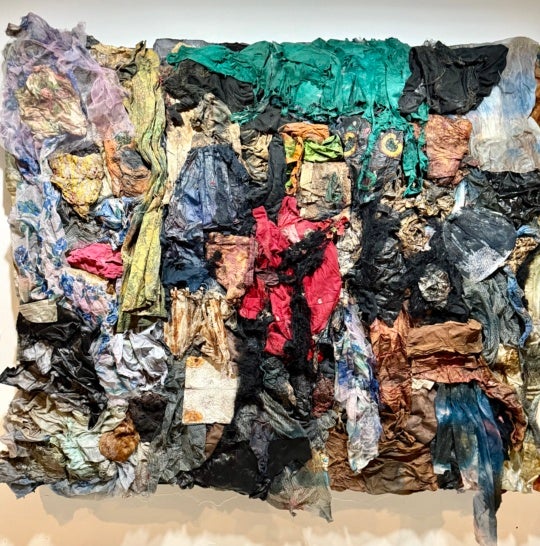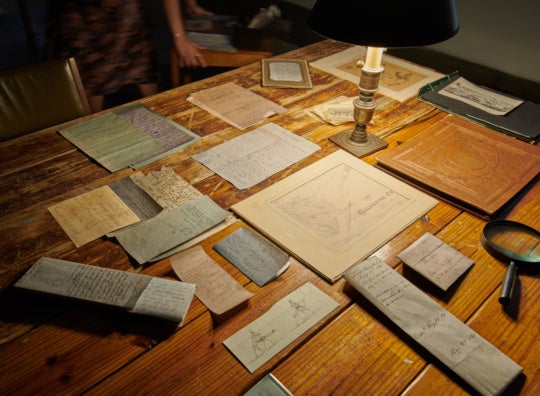Vesna Pavlović’s exhibition “Lost Art” finds the photographer continuing both her exploration of history—personal and national—as well as her investigation of obsolescent film technology. These are themes I’ve come to expect from Pavlović, but “Lost Art” is characterized by an unexpected sculptural sensibility that brings a welcome novelty to the proceedings, enlivening the display with the artist’s felt enthusiasm for the physicality of film.
The exhibition at Zeitgeist Gallery in Nashville includes just over a dozen prints, a pair of fabric flags attached directly to a gallery wall, and a display of slide projectors, slide containers filled with slides, and white screens on stands in an arrangement that feels like a walk-through display in a museum of visual anthropology.

Pavlović, who was born in Yugoslavia, continues her ongoing “Fabrics of Socialism” project here, photographing prints found in a black-and-white archive at the Museum of Yugoslav History. The archive was created for former Yugoslav president Josip Broz Tito after World War II, and it documents Tito’s world travels and other notable events during his presidency from 1953 to 1980. Taking photographs of photographs is inherently impractical, but the ritualistic aspects of the artist’s practice mirror and reinforce the ritual parades, speeches and performances she pictures, capturing a sense of what Pavlović calls “Socialist choreography.”
Pavlović also researched an archive of old newsreels. The exhibition includes photographs of the archive itself—stacks of flat, circular, metal film canisters decorated with colorful labels and handwriting. One newsreel includes footage of a celebration the artist participated in as a young girl, and she includes a still that she thinks pictures her at the event, encapsulating the artist’s fascination with both personal and national memories in a single image.

The most unexpected piece in the show is a pair of fabric flags hanging side-by-side on a gallery wall. The piece is titled Elements of the Choreography. This deconstruction of the Yugoslav flag includes stripes and a star, but instead of the bright colors we associate with flags, this one is just silver and white. Pavlović’s work has utilized space and referenced sculpture through installations of images projected on suspended sheets of Plexiglas or on plastic transparent domes on a gallery floor, but this is the first time I’ve seen a sculptural work in any of her exhibitions that didn’t include a photographic element. As a result, it’s one of the most memorable works in the show.
Another way Pavlović has projected images in her past shows is by shooting them onto fabric curtains. The curtains symbolize the showbiz quality of Socialist choreography as well as the Iron Curtain of the old Soviet Union. Here, she’s taken photos of the projected images, and the texture of the curtains makes the images appear three-dimensional. I couldn’t help but examine each with a sidelong stare, somehow not believing that they were just flat images. The effect is impressive and surprising, as is this exhibition.
Joe Nolan is a critic, columnist, and intermedia artist in Nashville. Find out more about his projects at www.joenolan.com.




